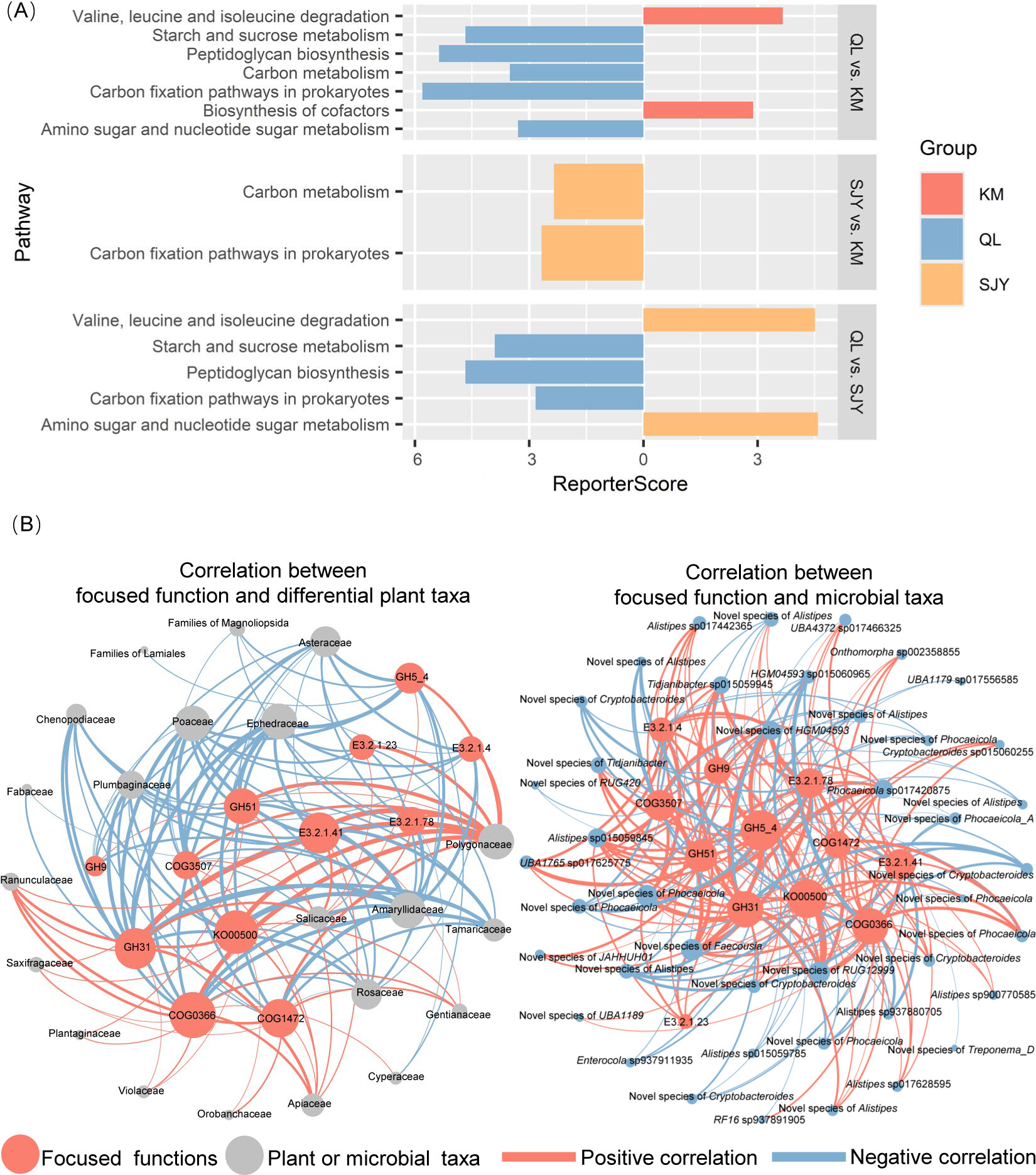The gut microbiota in different diets help hosts to obtain sufficient nutrients from food, which is important for ungulates in the Qinghai-Tibet Plateau to adapt to different regions. Quantitatively investigating the relationship between the host diet and the gut microbiota is important for exploring the adaptation of these ungulates to environments. This study used bharals as an example and used high-throughput sequencing techniques and liquid chromatography-mass spectrometry to investigate the diet, the composition, and the function of bharals’ gut microbiotas, as well as the composition of gut microbial metabolites in three regions of the Qinghai-Tibet Plateau. The inter-region differences in them were compared, and relationships among these differences were explored. Results indicated that bharals in the Qinghai Lake basin exhibited a diet predominantly of Polygonaceae and less feeding on Rosaceae and Poaceae compared to bharals in the Kunlun Mountains region and the Sanjiangyuan region. Bharals in the Qinghai Lake basin possessed gut microbiotas with a greater capacity to metabolize carbohydrates. And the functional capacity of such functions was positively correlated with the abundance of Polygonaceae in the diet and negatively correlated with the abundance of Rosaceae and Poaceae. Combined with the lower crude fiber content of Polygonaceae and higher crude fiber content of Rosaceae and Poaceae, we hypothesized that bharals met their energy requirements under low crude fiber intake conditions through their gut microbiota. This study provided insights into understanding how gut microbiotas help hosts adapt to local diets during the adaptation of ungulates to different regions in the Qinghai-Tibet Plateau.

Fig 4 Differential function and their correlation between differential plant taxa and differential microbial taxa. (A) Differential function based on the KEGG enrichment analysis (P < 0.05). QL: Qinghai Lake basin. KM: Kunlun Mountains region. SJY: Sanjiangyuan region. (B) Correlation between differential plant taxa and differential microbial taxa to the focused functions. Larger nodes indicate more functions or taxa associated with them. A thicker line indicates a stronger correlation between the two nodes of the line. KO00500: starch and sucrose metabolism; COG3507: beta-xylosidase; COG1472: periplasmic beta-glucosidase and related glycosidases; COG0366: glycosidase/amylase.
The link below will guide you to the reading:
https://journals.asm.org/doi/epub/10.1128/msystems.00422-25
